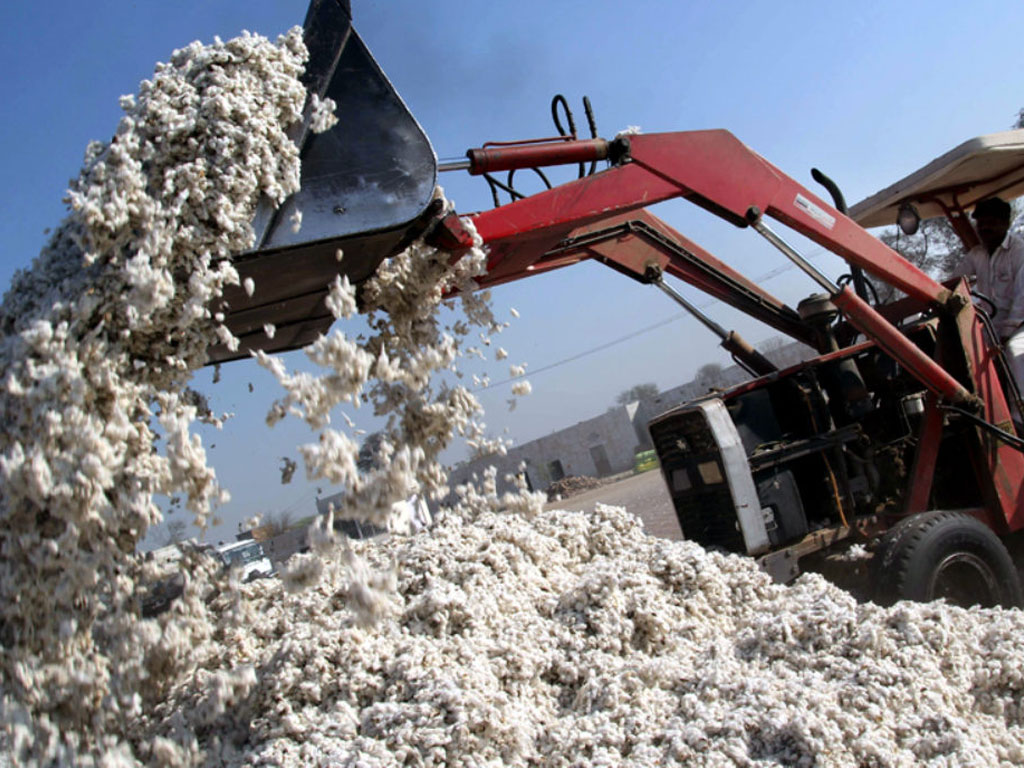The cotton woes

It is unfortunate that cotton production and its acreage in the country have been declining steadily over the years. A bumper crop of 15 million bales was cultivated in 2011-12, which declined to about 14 million bales in 2014-15 and further to 9.9 million bales in 2015-16. It recovered somewhat to 11.9 million bales in 2017-18 but is again estimated to decline to little over 10 million bales during the current year, showing a steep fall of 5 million bales over the last seven years. According to the latest figures issued by the Pakistan Cotton Ginners Association (PCGA), cotton production up to 1st January, 2019 stood at 10.273 million bales as compared to 11.108 million bales in the corresponding period of last year. During this period, Sindh produced 4.111 million bales or 2.42 percent less than the output of 4.123 million bales last year while the fall in production in Punjab was more pronounced at 10.63 percent, or 6.162 million bales as opposed to 6.895 million bales last year. It may be mentioned here that the fall in Sindh was less pronounced than Punjab despite severe shortage in water availability in the former province at the initial stages of cotton crop. The major reasons for the fall in cotton production over the years have been declining areas under cotton cultivation, pest attacks and lower water availability. About 9 million acres were cultivated during 2011-12 which have come down to 5.9 million acres in 2018-19.
An almost consistent decline in cotton output is a very bad news for the country. It is one of the major cash crops for the farmers who largely depend on its income for other necessities of life. Lower income from this crop would obviously depress the farmers' standards of living. Besides, it is very important crop for the economy as it has a share of 1.0 percent in GDP and contributes 5.5 percent to agriculture value addition. Also, it absorbs a bulk of labour force, both in the cities and rural areas, of the country and is a major foreign exchange earner and stimulates growth in other sectors. Sadly, however, the output of cotton production has been even less than domestic textile industry's needs of 13.2 million bales in most of the years, necessitating imports in large quantities and expenditure of precious amount of foreign exchange. Two key factors seem to have contributed to this poor performance. Firstly, attractive profitability of competing crops has led to shifting in area under cotton cultivation over the last several years, especially in the cotton producing districts of Punjab. Secondly, per hectare yield of cotton continues to be poor, inducing the farmers to cultivate other crops. These factors have forced the cotton industry to import cotton from abroad, especially of better varieties, for producing value-added items: raw cotton imports stood at 3.6 million bales in FY18 compared to 2.9 million bales in FY17.
In our view, the government, for a variety of reasons, needs to change the policy and chalk out a plan to increase cotton production in the country. Over the past few years, growers have clearly shifted from the production of cotton to sugarcane due to the political clout of sugar industry and vast amount of subsidies offered to sugarcane farmers. The present government needs to take a bold decision to avoid subsidies which would reduce the burden of subsidies on the budget and allow the country to utilise its land resources according to the comparative advantage and maximise the productivity of agriculture sector in accordance with the international price signals. We know that the production of sugarcane is less labour-intensive and the plant root stays for about three years but cotton is a semi-drought crop and needs far less water. Since the country is faced with water shortage, the production of cotton crop could be ideal for a country like Pakistan.























Comments
Comments are closed.